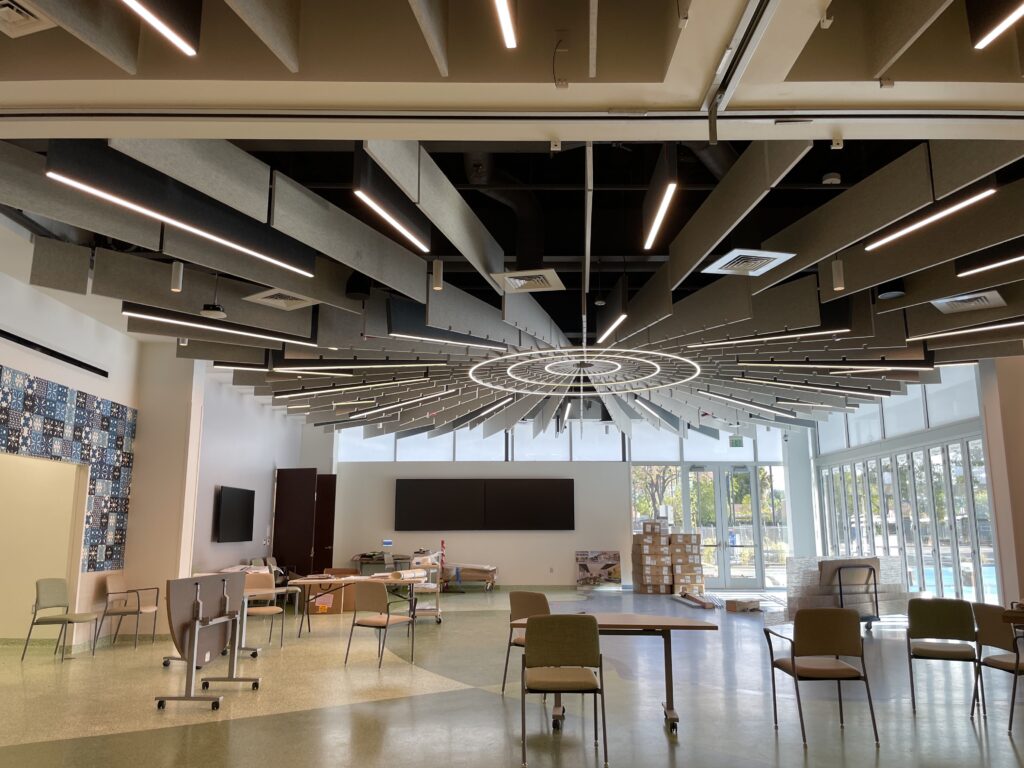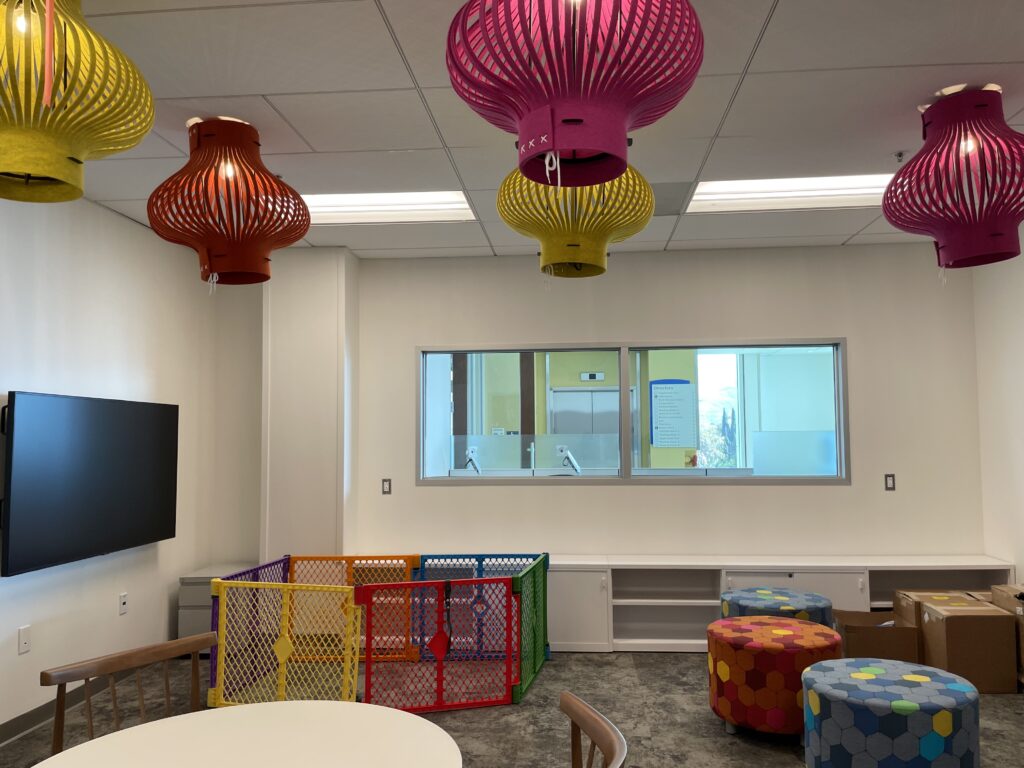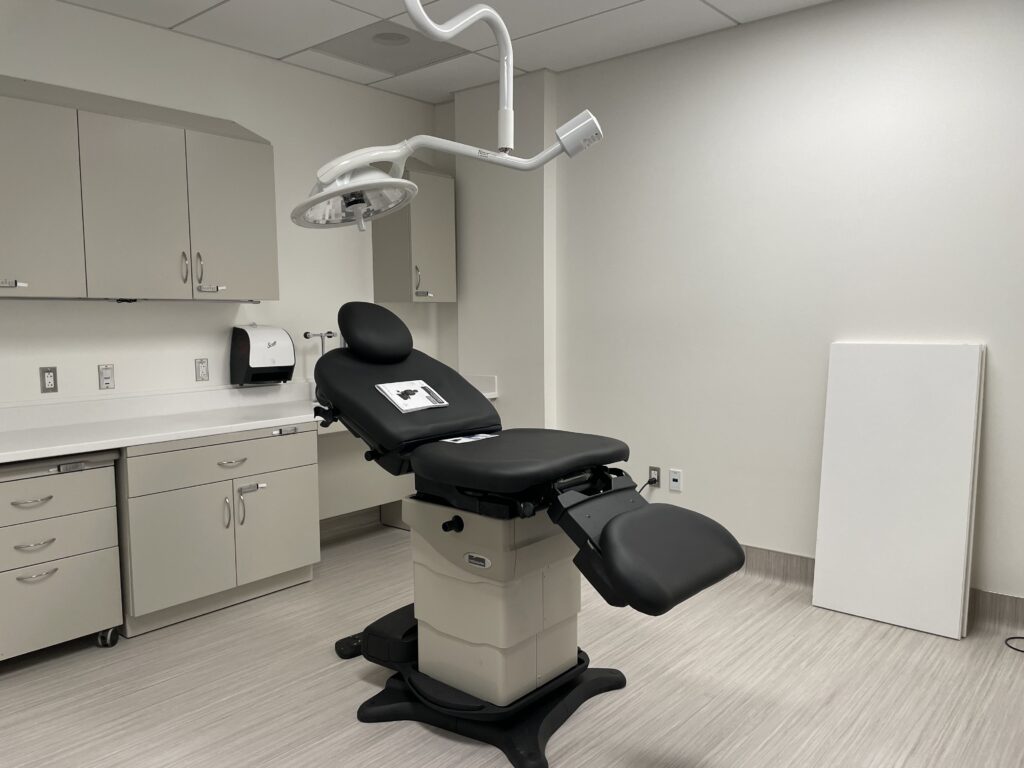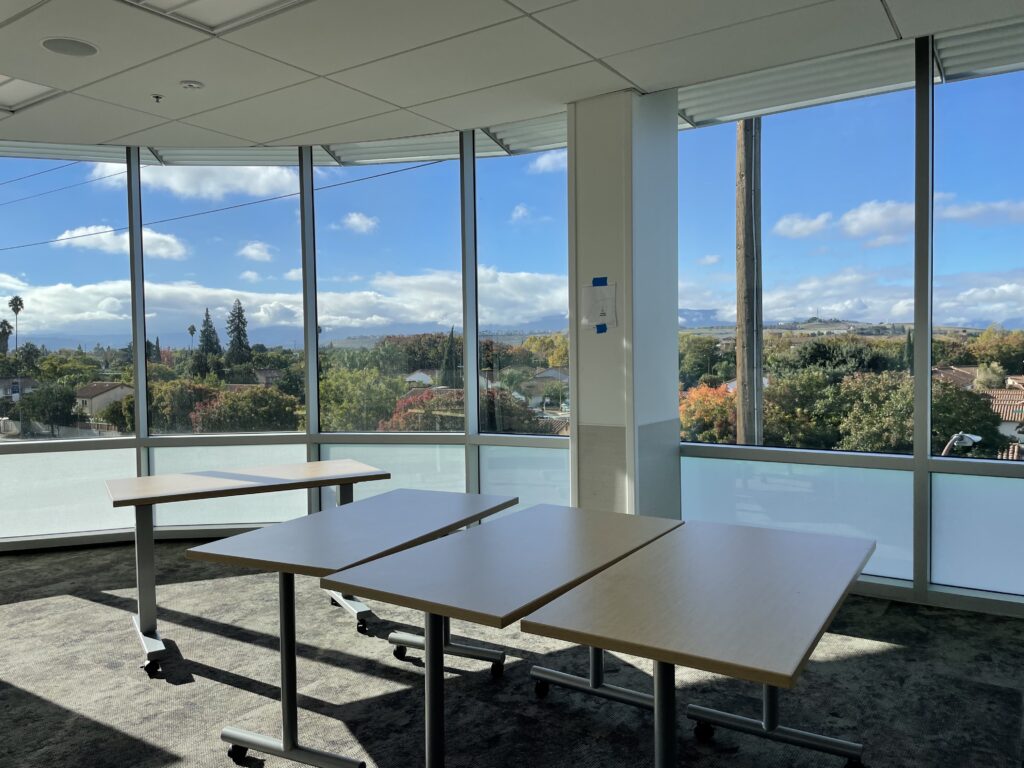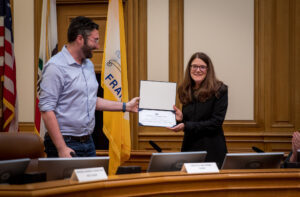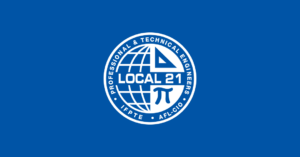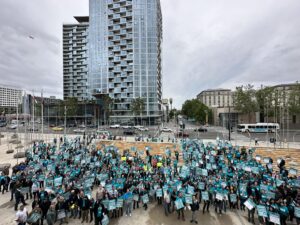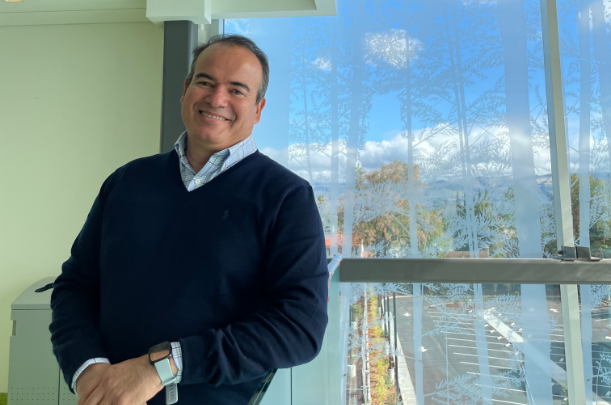
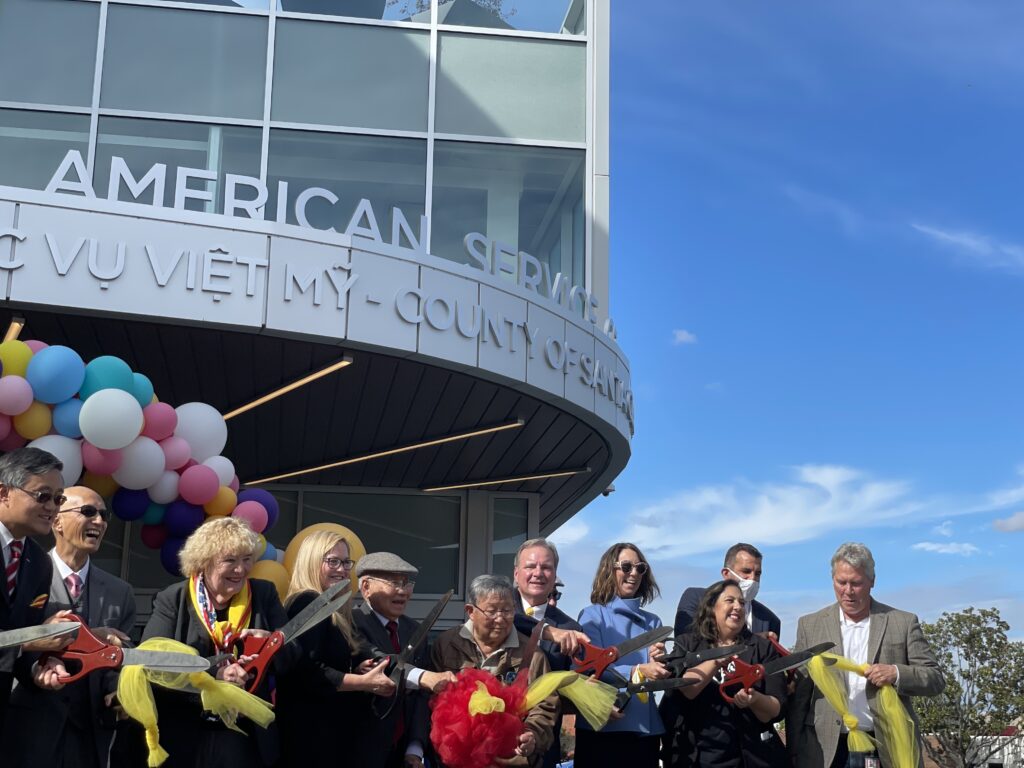
Roberto Mendoza (he/him) is a Capital Projects Manager with the Facilities and Fleet Department for the County of Santa Clara. He has been a member of IFPTE Local 21 since joining the County in February 2017 and serves as the Treasurer for the Santa Clara County Engineers and Architects Association Chapter – South Bay.
Santa Clara County unveiled its historic Vietnamese American Service Center to the public at a ribbon-cutting ceremony in October 2021. It is the first of its kind in the nation. Roberto Mendoza gave us a tour of the facility, and we sat down for an interview and asked him to share about his work and how he serves the public.
How does your work impact the public?
Roberto Mendoza:
I can tell you some of the other County projects I’ve worked on before—whether it’s making improvements to facilities throughout the County or providing new facilities for the public to access services—maintaining the County’s essential facilities. The vital work that the County does depends on having well-maintained, operable facilities that offer safety, promote wellness, and represent our community interests.
“For me, there is so much satisfaction that comes from this project. I myself am an immigrant, a refugee. My family came to the United States to escape a civil war. I came here when I was 13 years old, so a lot of the sentiment of the people that this serves is a common sentiment. Unfortunately, history does repeat itself. I come from El Salvador, which at one point, was called the Vietnam of Latin America.”
What was your role in constructing the Vietnamese American Service Center?
RM: I was first hired by the County in 2017. My role in the Vietnamese American Service Center (VASC) is that I represent the County’s interests. My role includes the process of negotiations with design, construction, and management professionals, conducting meetings with departmental stakeholders and with the community-at-large, and unveiling progress to the Board of Supervisors as well as the Children, Seniors, and Families Committee.
The programming phase took almost a year to complete, from February to December of 2017. Afterward, a County committee selected AEDIS Architects as the design team. They took the program, came up with multiple concepts at the schematic level, and the design was refined and vetted by the stakeholders. It was further refined into the final design that you can see as the built product.
For about 16 months, we were in the design phase. When it came to the design features, a balance was struck between tempering the expectations of the stakeholders and design team while staying within the targeted budget. After this period, the contract was awarded to Rodan Builders.
Lo and behold as we entered construction, the COVID-19 pandemic hit very early on when there was not a single piece of steel in place. All we had was a slab on the ground. But, as you know, this is an essential facility to the County, so the construction activities were deemed essential, and the work carried on.
Once in construction, we routinely dealt with issues on-site. This included all of the requests for information, material samples, and scheduling issues. A lot of this role is problem-solving with the design and construction team to get us to an opening date. I feel fortunate to have surrounded myself with an extremely capable and professional team of builders and designers.
Interviewer: I saw that the estimated completion date would be around February 2022, close to the Lunar New Year.

RM: That’s the target for the grand opening. For us, our deadline comes a lot sooner. We need to get County staff into the building so that they can start training and getting familiar with how everything works in preparation for serving the public. We are trying to get the building systems ready before that February date.
Interviewer: You didn’t just worry about the pandemic for your own family’s safety, you also had to worry about work and how it affected the community.
RM: I had a head full of hair last year! Not a single wrinkle or grey. But here I am. It’s been a roller coaster ride. There’s no other way to describe it. For me, there is so much satisfaction that comes from this project. I myself am an immigrant, a refugee. My family came to the United States to escape a civil war. I came here when I was 13 years old, so a lot of the sentiment of the people that this serves is a common sentiment. Unfortunately, history does repeat itself. I come from El Salvador, which at one point, was called the Vietnam of Latin America.
Interviewer: Thank you for sharing that. It’s very personal, but serendipitous.
RM: There was a lot of emotion expressed and a lot of gratitude. That to me is priceless. I could still be cranking out commercial design work elsewhere, and I personally would never get the same satisfaction from those jobs.
There’s so much room for improvement to address the needs of our communities. It is a never-ending project. The more we spend fixing our societal issues at home and the less we spend on foreign wars—that’s the direction that we really need to move in as a society.
Why are you proud to be a member of IFPTE Local 21?
RM: Being a member of Local 21 lets me focus on the work at hand, and I don’t need to worry about employment issues as they come up. I have witnessed my union board making sure that member queries are properly addressed, and they have also collectively bargained on behalf of the membership. I’ve also been part of the board. I’m aware of how tirelessly the union intercedes on our behalf, constantly looking out for what can be improved.
